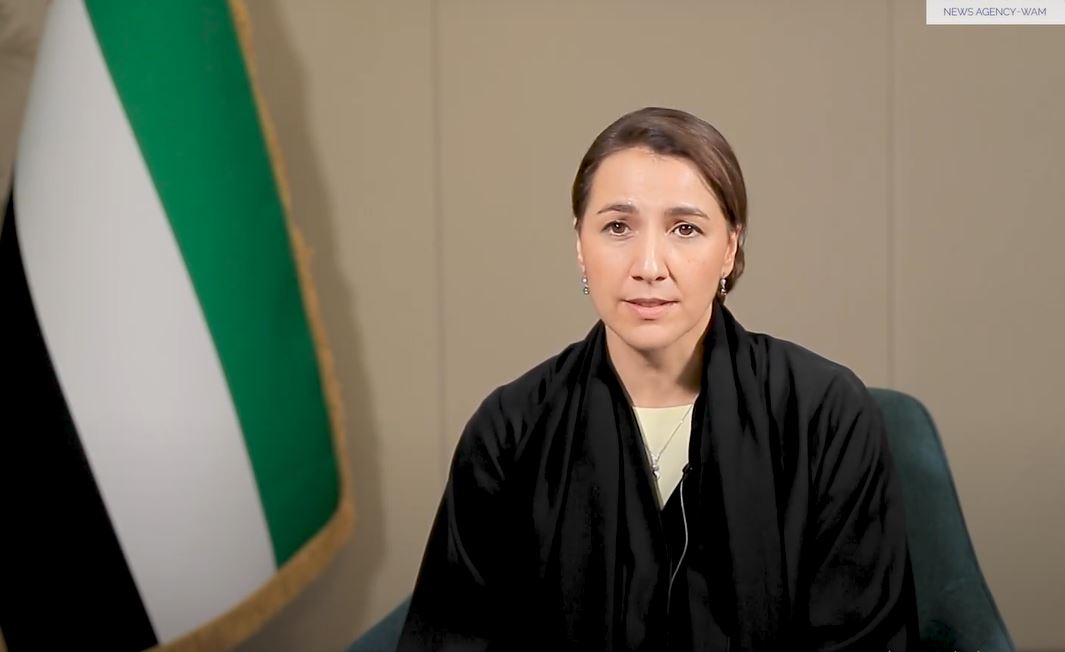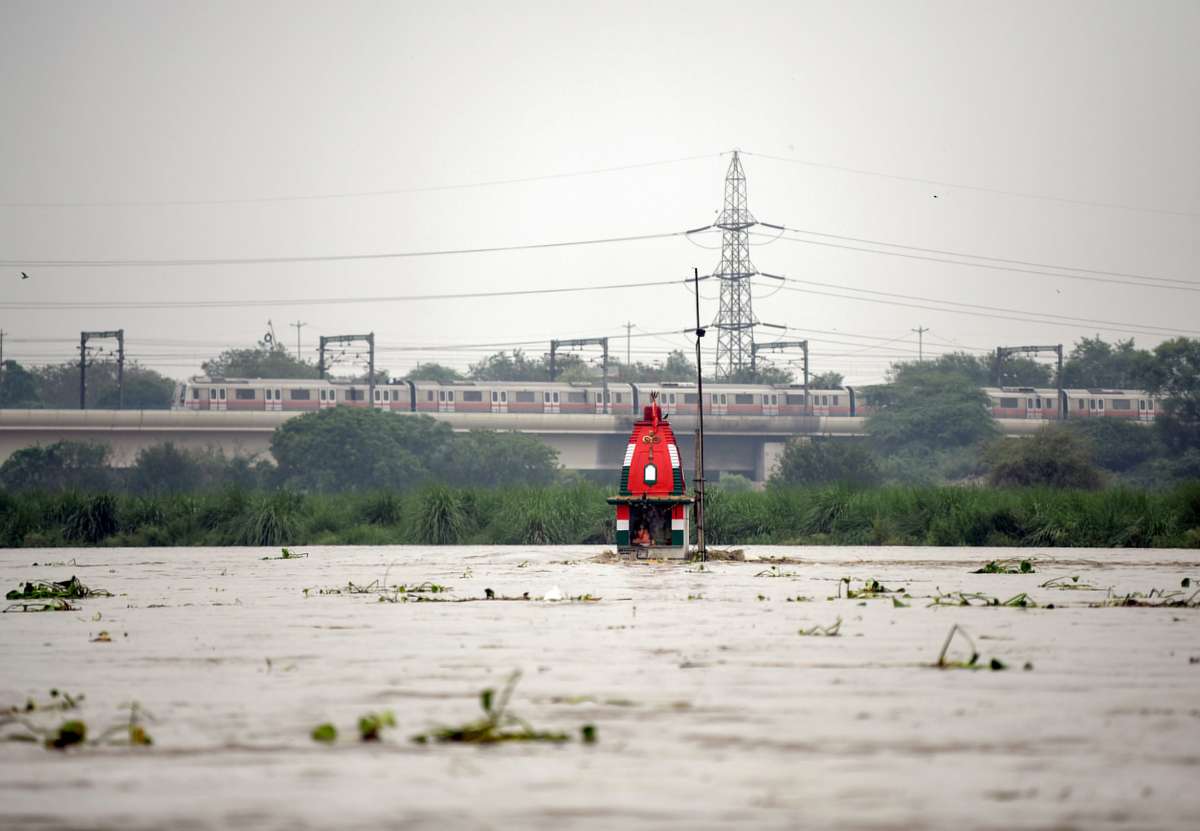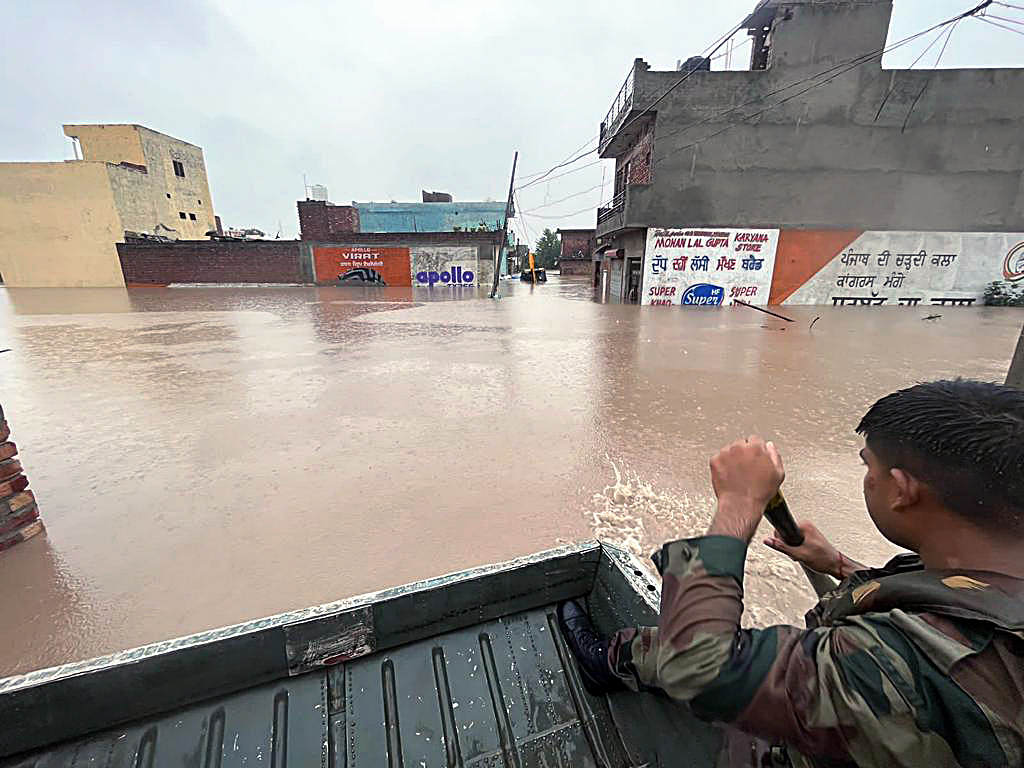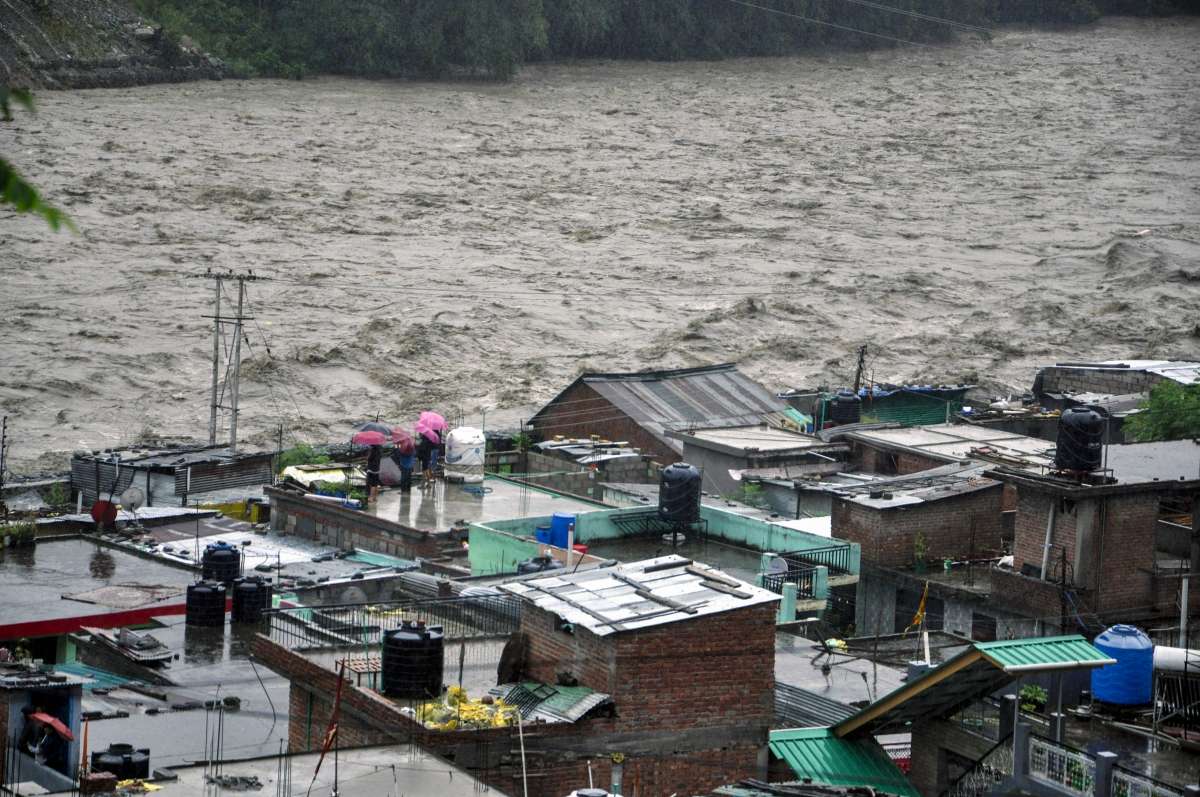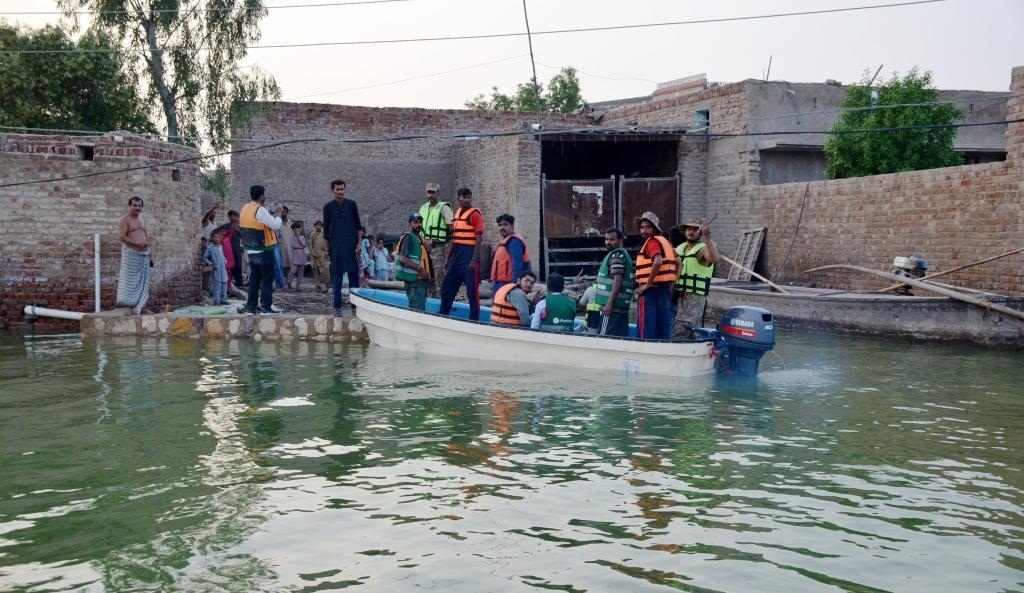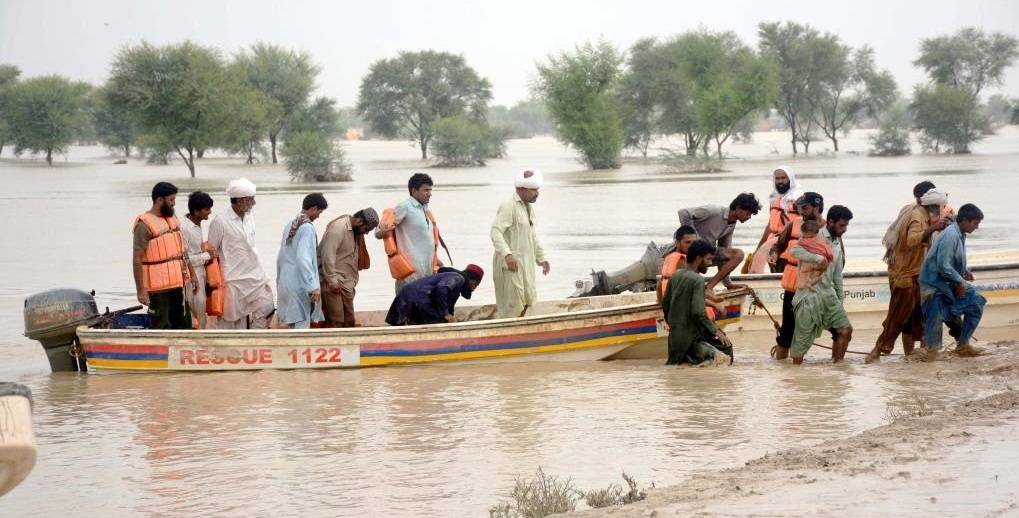District administration have evacuated over 900 villagers who were sheltered in government schools in Sahira and Shekhupura Nau villages. …reports Asian Lite News
Pakistan’s National Disaster Management Authority (NDMA) has issued a warning of medium to high-level flooding in the Sutlej river, directing advisories to provincial officials to ensure protective measures.
According to the NDMA warning, flooding is expected near Ganda Ginghwala, Kasur, during the next 24 to 48 hours as the water level around the area continued to rise.
“The water level of Ganda Singhwala was about 20.50 feet at 4 p.m. (Wednesday), which rose to 20.90 feet by 7 p.m. in the wake of water relased by India. The severity of a flood is considered if the water level crosses 19.5 feet,” an NDMA official said.
Earlier, several villages were washed away after flood water breached protective walls of the rivers and entered into the surrounding areas of Mastaykay, Mahiwala, Dhoopsari and Bhikiwind.
Standing crops across hundreds of acres of land were also destroyed and submerged.
District administration have evacuated over 900 villagers who were sheltered in government schools in Sahira and Shekhupura Nau villages.
“We have set up more relief camps in the flood hit areas. It is expected that about two dozen villages and hamlets may submerge in the coming 24 to 48 hours if the water level continued to rise at this pace,” a district official said.
“The administration of the flood-prone areas should continue monitoring the sensitive areas, especially at the river Chenab’s Trimmu and Ravi’s Jassar areas until July 20,” the NDMA said.
Moreover, the weather advisory has also forecasted scattered thunderstorms and rains of light to moderate intensity in parts of Punjab and the capital Islamabad in the next 48 hours.
This may also contribute to the rising water levels of all major rivers of the Indus River System, causing more intensified flooding.
The Indus River System Authority (IRSA) also released at least 283,200 cusecs of water from various rim stations with an inflow of at least 325,700 cusecs on Wednesday.
“The water level in the Indus river at Tarbela Dam was 1,517.31 feet, which was at least 119.31 feet higher than its dead level of 1,398 feet. Water inflow and outflow in the dam were recorded at 143,200 cusecs and 140,000 cusecs respectively,” it said.
The water level in the Jhelum at Mangla was recorded at 1,198.60 feet, which was at least 148.60 feet higher than its dead level of 1,050 feet.
The next 24 to 48 hours remain critical for many areas of the Punjab province as water levels are swelling at fast pace, triggering flood threat alarms and putting thousands of acres of standing crop fields along with surrounding localities, villages, towns and cities at high risk.


